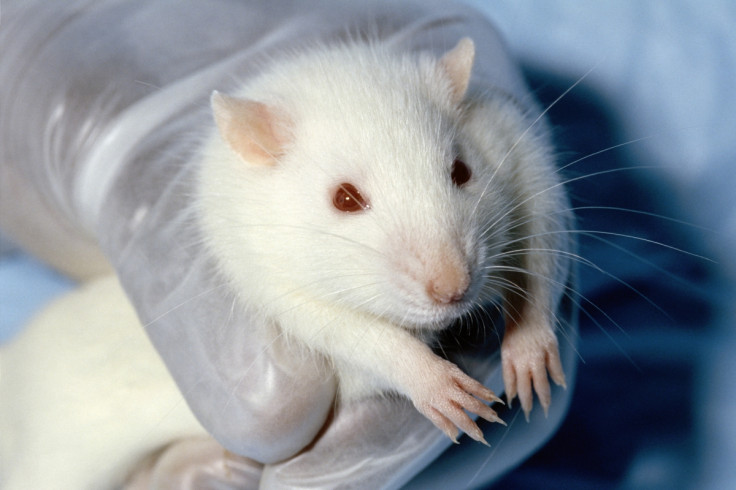Who's your ideal mate? Your 'first love' may have something to do with it
Studies have shown that early experiences play an important role in who we choose as a sexual partner.

Your first sexual partner may have more to tell you about your spouse or current lover than you may think. Although this may sound surprising to you, studies have shown early experiences play a role in who we choose as a sexual partner.
Imagine you're single. It is a warm summer Saturday night in the city. You're in a club, drink in hand, freshly paid and feeling great. As the music plays in the background while your gaze meanders across the bar, you spot the most beautiful and sexy person you have ever seen. Close your eyes for a few seconds and think: How do they look?
Most of us have a type (or sort of) when it comes to a sexual partner. But our "type" can also vary and change throughout our lifespan based on our experiences. Scientists have shown repeatedly that several factors influence our ideal mate.
I work in the the lab of James G. Pfaus, in the Department of Psychology at Concordia University. We wondered if your first sexual partner can determine how you choose a current sexual partner, and if so, how and why.
Our research shows that our first sexual partners can influence our current choices of sexual partner. In order to study first sexual experiences, our lab works with rats, because - believe it or not - the way they have sex is remarkably similar to ours.
The mechanisms behind this phenomenon
Everything we experience is processed by our brain. Our nervous system is equipped with a psychological and biochemical infrastructure that allows us to learn about our environment and experiences.
Perhaps the name Ivan Pavlov rings a bell to you? Pavlov, a Nobel Prize winner, discovered that in anticipation of being fed, dogs would salivate to the sound of a bell, by establishing an association between its sound and the food if both cues had been previously paired.
Similarly, humans are equipped with a nervous system that shares the same learning mechanisms. This helps to explain why you experience that pleasurable sensation when you open a can of beer on a hot day, or why just "talking dirty" can trigger sexual arousal in the form of genital blood flow.
Partner features such as height, hair colour and body dimensions, along with contextual cues such as your bed, a bar, the time of day or day of the week are the bell, and sexual gratification is the food. This is how we learn things about sex: Moulding our type, and also how and when to have sex, along with what to do, with who and even why.
So how could your "first" have anything to do with your current lover?
Our study: Lingerie and perfume on rats
It has been shown that male rats can be trained to associate a sexually receptive female and the sexual reward from intercourse with a neutral odor cue worn by the female, like a perfume. When paired enough times, the male rat will develop a preference for this female over an unscented female.
With this in mind, in our study, we manipulated the first experience of these male rats by allowing them to copulate with a receptive female. Later on, we trained them to prefer females that wore perfume.
Finally we tested their preference — allowing them to copulate freely with two females: One bearing the perfume and their "first." What we found is that males did not show a preference for their current partner (the female with the perfume), unlike in the other groups who only copulated with scented females.

In other words, although male rats tend to develop a partner preference for their current partner, once they were presented with their first partner we were able to interfere with that learned preference.
This shows that their first sexual experience can have a profound effect in partner preference.
Furthermore, we wondered if this was specific to olfactory cues. Therefore, when we swapped the odor cue for a jacket (yes, rat lingerie!), similar results were found, meaning the rats preferred their first partners — wearing jackets — over the ones that did not wear jackets.
The experiments show that rats can "learn to associate sex with a variety of contextual cues, including the texture of clothing," indicating that sexual fetishes are at the base of the same learning mechanisms.
From the present, to the past, to the future
These findings do not capture all the complexities of partner preference choices, nor suggest that one is a prisoner of the past choices when it comes to choosing a sexual partner or a spouse. However, they shed light on how we form a type.
There may be a pattern your past can explain, and to a certain extent, who you choose as your future partner. There are an infinite number of factors or features by which we choose as a mate.
Although the findings clearly support our conclusions, it's important to mention that some rats still preferred their current partner, or even none of them. That means, like rats, different people will have different preferences, and will be influenced by first experiences differently.
If you're wondering if these results could be applied to other sexual orientations other than heterosexual, the answer is yes. Although the results were conducted between male and female rats, the same learning mechanisms apply to people who are homosexual, queer and every hue in colourful rainbow of sexual orientations.
Our type and preferences are unique and incomparable. There is simply no right or wrong — even if you believe you don't have a type. As long there is consent and respect, how, where, when, who or even why we choose to sleep with someone should not matter to anyone but you and your partner.
Whether your current partner or spouse resembles your "first" or not, it is clear that we learn things from our past experiences, and sex is no exception.
Gonzalo R. Quintana Zunino, PhDc, is a Behavioral Neuroscience and Public Scholar at Concordia University.
This article was originally published on The Conversation. Read the original article.






















